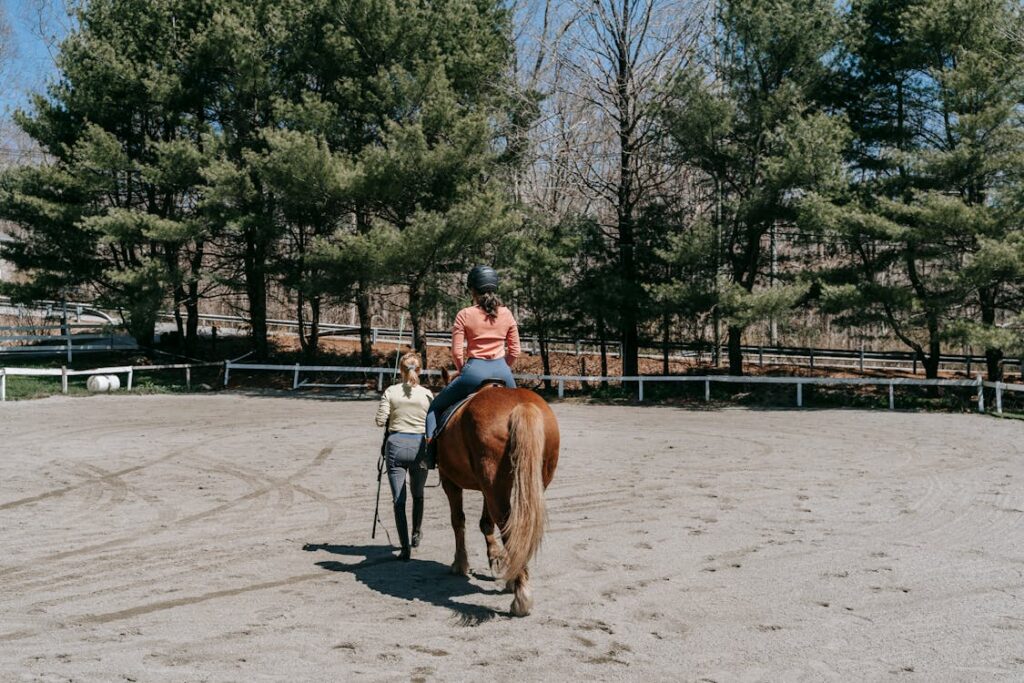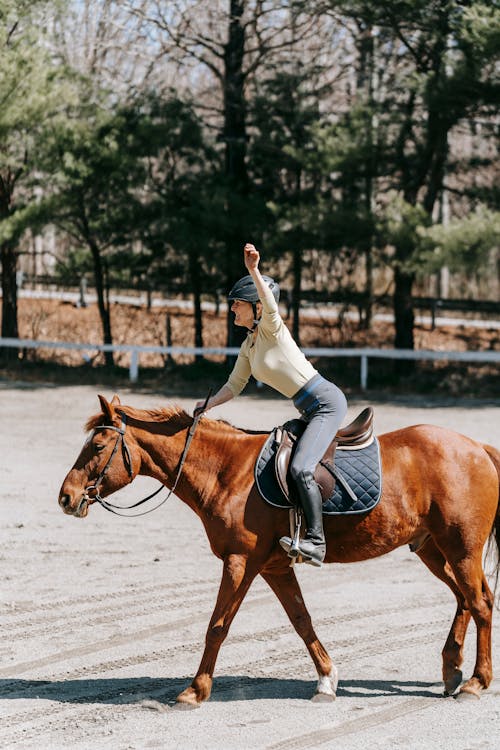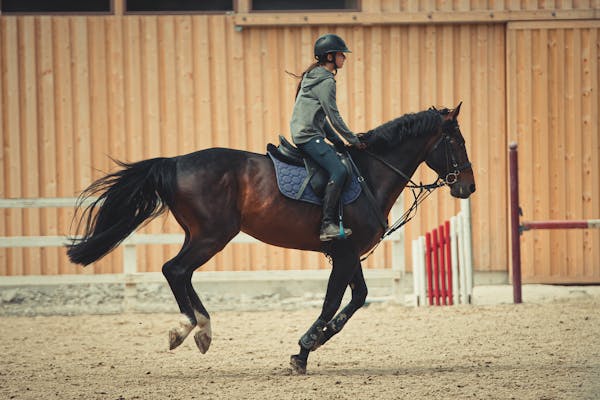Choosing the Right Riding School
Selecting the right riding school is crucial for a positive and safe introduction to horseback riding. Look for a school accredited by reputable organizations such as the British Horse Society (BHS) or the Certified Horsemanship Association (CHA). Visit the facility to assess its cleanliness, the condition of the horses, and the quality of the equipment. Speak with the instructors to gauge their experience, teaching style, and approach to safety. A good riding school should offer structured lessons tailored to your skill level, provide well-trained and well-cared-for horses, and create a supportive learning environment.

Essential Riding Gear for Beginners
Having the right gear is essential for comfort and safety when starting horseback riding. Begin with a well-fitting riding helmet that meets safety standards, as protecting your head is paramount. Invest in a pair of riding boots with a small heel to prevent your foot from slipping through the stirrup. Comfortable, form-fitting riding pants or jodhpurs are important to avoid chafing and provide better grip in the saddle. Gloves can help protect your hands and improve grip on the reins. Additionally, consider a riding vest for extra protection, especially when learning to jump or ride at higher speeds.

Basic Riding Techniques Explained
Learning the basic techniques of horseback riding is the foundation for developing your skills. Start with mounting and dismounting, ensuring you do so smoothly and safely. Once in the saddle, focus on achieving a balanced and relaxed seat, with your heels down, shoulders back, and hands steady. Learn to use the reins effectively to communicate with your horse, combining them with leg aids to guide your horse’s movements. Master the basic gaits – walk, trot, and canter – by practicing transitions and maintaining rhythm. Developing these fundamental skills will build your confidence and prepare you for more advanced riding.
Safety Tips for New Riders
Safety should always be a top priority for new riders. Always wear a helmet and appropriate riding gear to protect yourself. Follow your instructor’s guidance and never attempt anything beyond your skill level. Be aware of your surroundings, especially when riding in an arena with other horses. Learn to read your horse’s body language and respect its boundaries, as horses can become spooked or agitated. Ensure your tack and equipment are in good condition and properly fitted before each ride. Finally, stay calm and composed, as horses can sense and react to your emotions.
Overcoming Common Riding Challenges
New riders often face common challenges that can be overcome with practice and patience. Balancing in the saddle can be difficult initially, so focus on developing a strong core and maintaining a correct posture. Nervousness around horses is normal, but building trust through consistent handling and positive experiences will help. Controlling the horse can be challenging, especially with more spirited animals, but learning to use your aids effectively and working with a responsive horse can improve your control. If you encounter difficulties, communicate with your instructor for tailored advice and support.
Progressing from Beginner to Intermediate Rider
As you gain confidence and skills, you’ll transition from a beginner to an intermediate rider. Start by refining your basic techniques, such as maintaining a steady seat and using your aids more subtly. Gradually introduce more advanced maneuvers, such as leg yields, half-passes, and simple changes of lead. Begin practising jumping over small obstacles and learning to ride different types of horses. Participate in group lessons or clinics to gain experience riding in different environments and with other riders. Setting goals, seeking feedback, and consistently practicing will help you progress and enhance your riding abilities.


